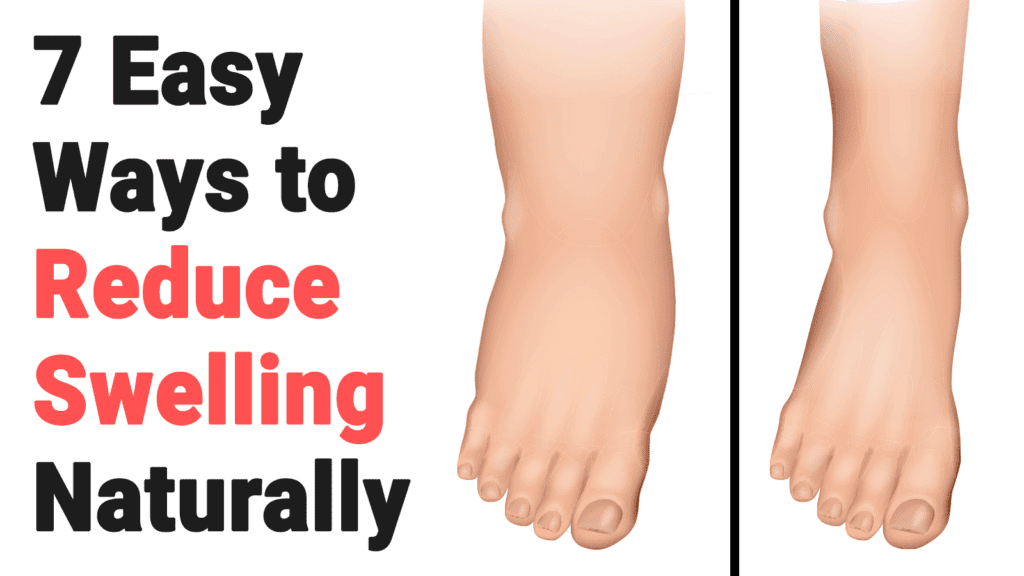Veganism has become increasingly popular in recent years, with many people choosing a plant-based lifestyle for positive physical change. While there are many reasons why someone might want to go vegan, one of the most common is health concerns. Nutritionists indicate that you’ll experience five physical changes when you switch to a vegan diet.
One of the most significant benefits of a vegan diet is a reduced risk of chronic diseases. Studies have shown that a plant-based diet can help lower the risk of heart disease, type 2 diabetes, and certain types of cancer. Plant-based foods are typically lower in saturated fat and higher in fiber, vitamins, and minerals essential for overall health.
A vegan diet involves only plant-based foods and eliminating foods that come from animals, including dairy products and eggs. Switching to a vegan diet can lead to physical changes in the body. By cutting out animal products and focusing on plant-based foods, you can experience many positive effects of a vegan diet.
Understanding the Vegan Diet
Veganism is a plant-based diet that offers many benefits and physical changes. It requires eliminating meat, dairy, eggs, and all other animal products. Some health benefits include:
- weight loss
- lowers cholesterol levels
- reduces blood sugar levels
- decreases the risk of some cancer, including colon, prostate, breast, stomach, and pancreatic cancers
- lowers the risk of type 2 diabetes
- rich in protective nutrients and phytochemicals
- low in saturated fats
- high in fiber, improving digestion and promoting bowel regularity
- lowers blood pressure
- longer life expectancy
While this diet offers many benefits, it’s important to note that vegans must be aware of how to obtain certain nutrients. Iron, calcium, and vitamin B-12 usually come from an omnivorous diet. Going without can cause detrimental health effects and harmful physical changes.
A vegan diet requires finding new ways to obtain these nutrients, such as fortified foods or supplements. Choosing nutrient-dense foods can help you reap the many benefits without experiencing a nutrient deficiency.
Five Positive Physical Changes Most People Experience From a Vegan Diet
Here are some key points to understand about a vegan diet and the positive physical changes you can experience:
1. Improved Digestion
One of the most noticeable physical changes people experience when they switch to a vegan diet is improved digestion. A plant-based diet is typically higher in fiber, which can help to regulate bowel movements and prevent constipation. Taking in more fiber can also reduce your risk of colon cancer, diverticulitis, and other digestive disorders.
Additionally, many plant-based foods are rich in enzymes, further aiding digestion and boosting gut health. These enzymes break down food so your body can easily absorb nutrients. Many plant-based foods, such as fruits and vegetables, are rich in enzymes that promote digestion. It can help to reduce bloating, gas, and other digestive discomforts.
2. Weight Management
A vegan diet can be a beneficial option for losing weight. Plant-based foods are typically lower in calories and higher in fiber, which can help promote feelings of fullness and prevent overeating. Additionally, many plant-based foods are rich in nutrients that can help to support weight loss, including protein and fiber.
Fiber is essential for maintaining a healthy weight. It helps keep you full and satisfied, promoting calorie control and reducing the likelihood of overeating. Additionally, fiber can help to regulate blood sugar levels, preventing cravings and promoting healthy eating habits.
Protein is also essential for maintaining a healthy weight because it helps build and maintain lean muscle mass. It helps boost your metabolism and burn more calories throughout the day. Many plant-based foods contain protein, including beans, lentils, tofu, and tempeh.
3. Increased Energy Levels
Another benefit of a vegan diet is increased energy, vitality, and stamina. Plant-based foods are typically easier to digest, meaning your body can convert them into energy more efficiently. Additionally, many plant-based foods are rich in vitamins and minerals that can help to support overall health and well-being.
Animal-based foods can be heavy and challenging for the body to digest, making you feel sluggish and fatigued. In contrast, plant-based foods are typically lighter and easier for the body to process, leading to a positive physical change. Vegan food options can be converted into energy more efficiently, increasing energy levels throughout the day.
Additionally, many plant-based foods are rich in vitamins and minerals essential for maintaining good health. For example, leafy greens are rich in iron, boosting and maintaining healthy blood cells and preventing anemia.

4. Improved Skin Health
Many people report clearer skin and reduced acne after switching to a vegan diet. Plant-based foods are typically lower in saturated fat and higher in antioxidants, helping reduce inflammation and promote skin health. Additionally, many plant-based foods are rich in vitamins and minerals essential for healthy skin, including vitamins C and E.
Saturated fat can contribute to inflammation in the body, causing many health problems, including acne and other skin conditions. By reducing the amount of saturated fat in your diet and increasing your intake of plant-based foods, you can help to reduce inflammation and promote healthy skin.
Antioxidants are also essential for maintaining healthy skin. They help protect the skin from damage caused by free radicals, which can contribute to premature aging and other skin problems. Plant-based foods are typically rich in antioxidants, which help promote healthy, youthful-looking skin.
5. Enhanced Athletic Performance
A well-planned vegan diet can provide all the necessary nutrients for athletes, including protein, iron, calcium, and vitamin B1. It provides many benefits for physical change and enhanced athletic performance, including:
- Improved heart health: A plant-based diet can keep your heart strong by reversing plaque, lowering blood pressure and cholesterol, and reducing weight.
- Increased endurance and strength: A vegan diet can help athletes improve their performance by promoting weight loss, creating leaner bodies, and improving stamina.
- Improved recovery: A vegan diet can speed up recovery by lowering inflammation.
- Optimal energy: Plant-based diets provide the essential nutrients your body needs for training. It includes carbohydrates for energy production during intense exercise.
- Reduced risk of chronic diseases: A vegan diet is low in saturated fat and cholesterol-free, which can lead to heart disease, diabetes, weight gain, and other chronic conditions.
- Improved blood viscosity: A plant-based diet can help improve blood viscosity, which moves more oxygen to the muscles during exercise.
- Leaner body composition: Plant-based diets can help athletes decrease their body fat percentage and increase their muscle mass.
Tips for Successfully Transitioning to a Vegan Diet
A dietary transition can be hard if you don’t know where to begin. It’s best to start meal planning to ensure nutritional balance and positive physical changes. Following these tips and tricks can make the process smoother.
- Start gradually: Transitioning to a 100% vegan diet is likely too big of a change from one day to the next. Consider breaking it down into smaller, more achievable goals. Try new fruits and vegetables you don’t eat regularly, adding one or two a week.
- Educate yourself: Before beginning the transition, start familiarizing yourself with veganism. It will help you feel prepared and knowledgeable as you change your lifestyle. Take the time to understand vegan alternatives, including tofu, tempeh, and plant-based milk.
- Stock up on healthy foods: Eating plant-based is often cheaper than an omnivorous diet. When you stock up on healthy foods, you’re likelier to stick to the new diet and try plant-based alternatives.
- Crowd out, don’t cut out: Focus on crowding out animal products, not cutting them out. Try new plant-based foods and slowly crowd out the animal products. This approach can help adjust your taste buds, digestion, and shopping habits for long-term sustainability.
- Find recipes for inspiration: You can find many vegan recipes online or in cookbooks. Find recipes that appeal to you and try them out so you can find exciting dishes you love.
- Keep your meal rotation tight: It’s overwhelming to make such a change, especially if you’ve been eating meat your entire life. Keep your meal rotation tight and focus on the basics.
- Take it one day at a time: Remember that transitioning to a vegan diet is a process. You might slip up sometimes, and that’s okay. Don’t be too hard on yourself if it happens, and keep working toward your goal.
- Connect with other vegans: Join vegan groups or online communities to connect with others who are also transitioning to a vegan diet and can provide support and advice.
- Read food labels: Learn how to read food labels to identify hidden animal products such as whey, casein, and gelatin.
Final Thoughts on Seeing the Positive Physical Change in Your Body When You Eat a Plant-Based or Vegan Diet
Many physical changes can occur when you switch to a vegan diet. From improved digestion to a reduced risk of chronic diseases, a plant-based lifestyle can benefit your health and well-being. If you are considering going vegan, speak with a qualified nutritionist or healthcare professional to ensure you meet your nutritional needs.
While it’s important to note that everyone’s experience will be different when going vegan, these are just a few physical changes that can occur. If you’re considering switching to a vegan diet, it’s always a good idea to consult a healthcare professional to ensure you meet your nutritional needs.
By following these tips and seeking support from others, transitioning to a vegan diet can be an enjoyable and rewarding experience. You’ll experience all the physical benefits of plant-based eating while embracing a vegan lifestyle for health.



















